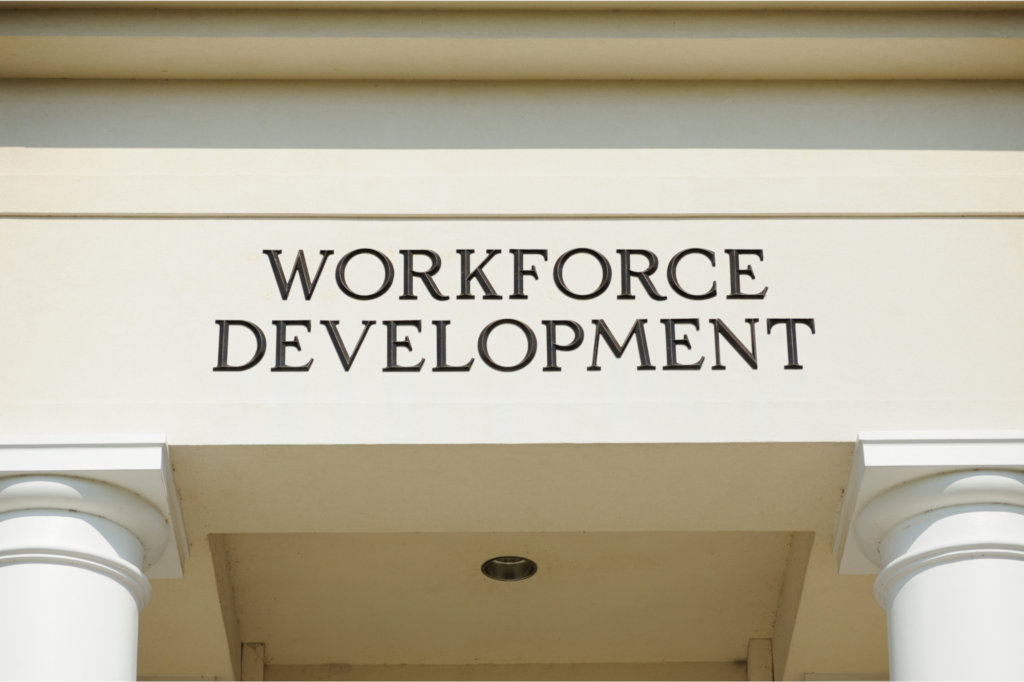Workforce Development: The New Frontier

Workforce Pioneers
I believe the times demand new invention, innovation, imagination, decision. I am asking each of you to be new pioneers on that New Frontier. My call is to all who respond to the Scriptural call: “Be strong and of a good courage; be not afraid, neither be thou dismayed.” – John F. Kennedy, 1960.
Like JFK’s call for pioneers on a New Frontier, employers are being called to a New Frontier of Workforce Development. While the stakes were higher, perhaps, for Kennedy than for us, there are serious short- and long-term implications associated with decisions about workforce development. It is not merely a business catchphrase. It portends our future economy.
Worker shortage is an enormously consequential issue threatening both for-profit and nonprofit organizations. There are many reasons for this, and they are not all pandemic related.
Worker shortage is not a recent phenomenon. I recently spoke with Jeff Korzenik, chief investment strategist for Fifth Third Bank and author of the book Untapped Talent. Korzenik says the workforce has been declining since 1980. From that time, America’s fertility rate has been steadily declining. (Currently it stands at 1.78 children per woman, and 2.1 children are needed to replace the current population.) Since the 80s, older workers have been increasingly leaving the workforce, and women have largely been required to leave work to take care of children during the pandemic. It’s been a long-term problem that’s not going away soon.
Worker shortage is compounded by workforce development challenges. Survey results from the Oklahoma State Chamber’s Public Affairs Forum reveal attendees overwhelmingly chose workforce development as their issue of greatest concern. In fact, Oklahoma business leaders indicated they wanted the state Legislature to spend pandemic relief funds on developing the state’s workforce.
Defining Workforce Development
So what is “workforce development”? It’s more than employee training. Here’s how it’s defined by Wonolo, a workforce consultancy group:
Workforce development is an interconnected set of solutions to meet employment needs. It can include changes to culture, changes to attitudes, and changes to people’s potential that help to positively influence a business’ future success.
Workforce development works by preparing workers with the skills necessary for a specific type of job. It prioritizes the value of ongoing workplace education and skills development, as well as addresses the hiring demands of employers. Because the goal of workplace development is to place workers in jobs where there are career development opportunities – and to nurture that development – a company can ensure they have an adequate supply of qualified individuals for their needs.
The dual challenge for employers is to (1) find sufficient workers, then (2) develop them into skilled and tenured employees. However, there’s a large speed bump in the road. Organizations already have a day job. They’re serving customers and clients, or manufacturing and selling products. How can they find time to recruit and develop their workforce?
That’s where outside organizations, like Goodwill Industries of Central Oklahoma, can help. Goodwill is more than a store. It’s a workplace development incubator. And there are other organizations that can assist developing your workforce.
You’re not alone. There are fellow pioneers on the New Frontier. Raise your hand. Ask for help. Together, we can be strong and courageous in the New Frontier.
Authored By Jim Priest
Jim Priest is president and CEO of Goodwill Industries of Central Oklahoma.
Originally published by Journal Record